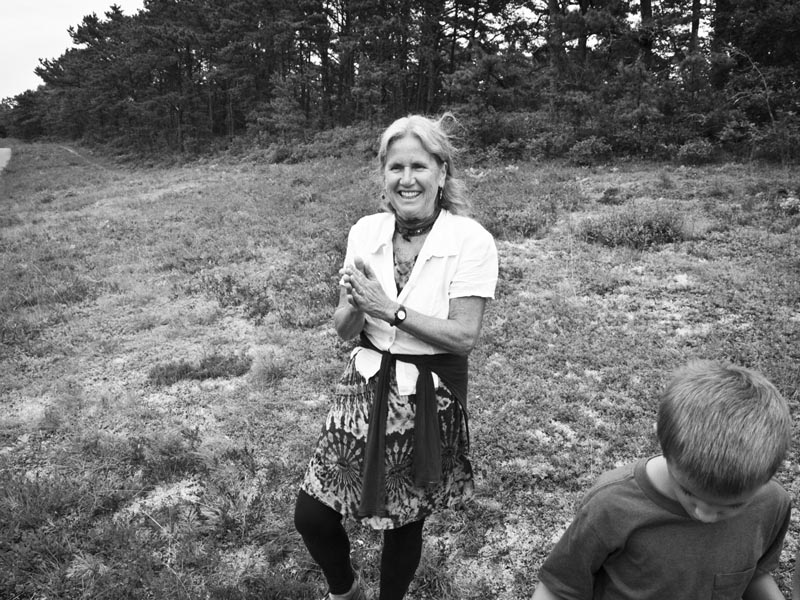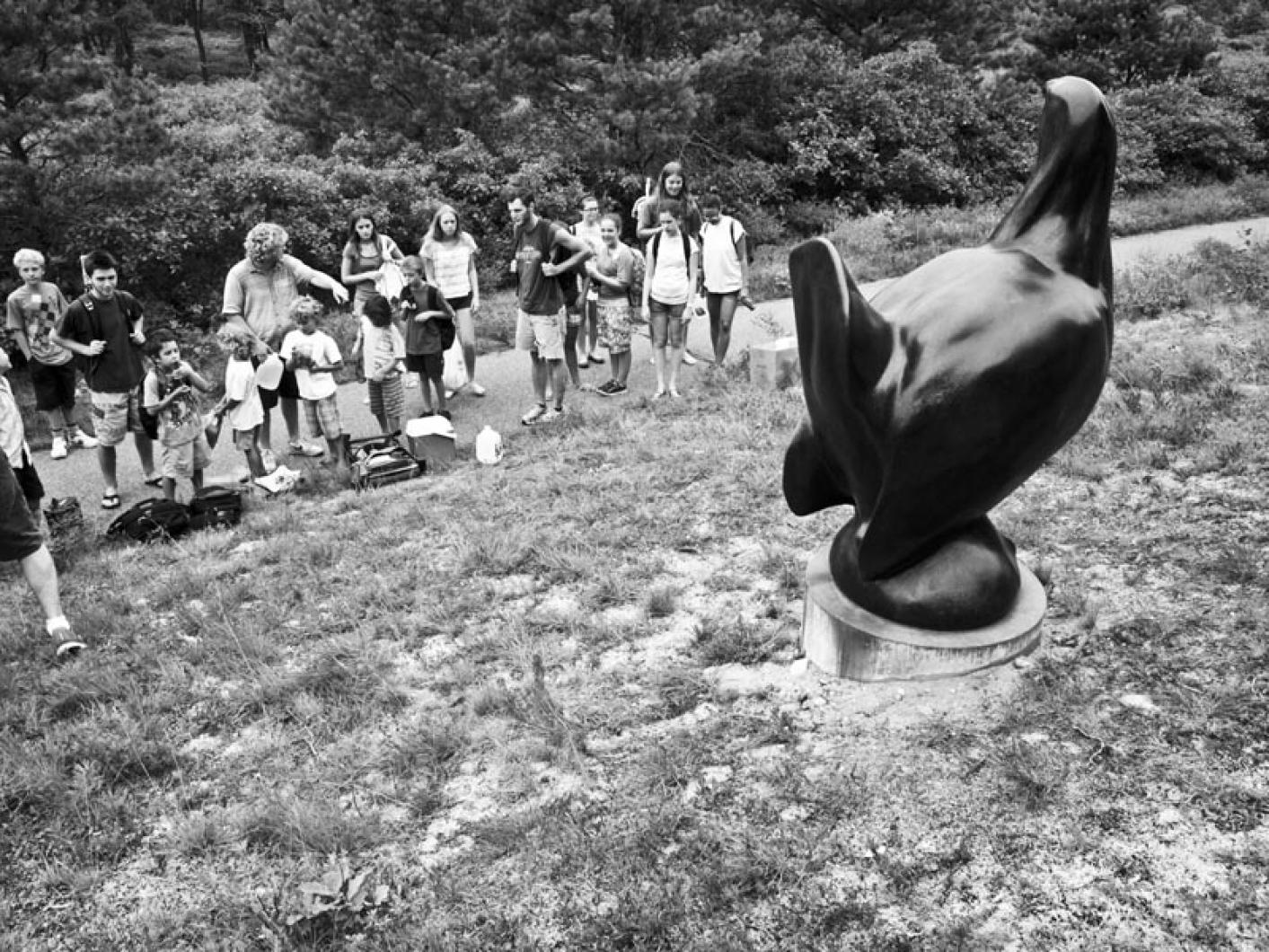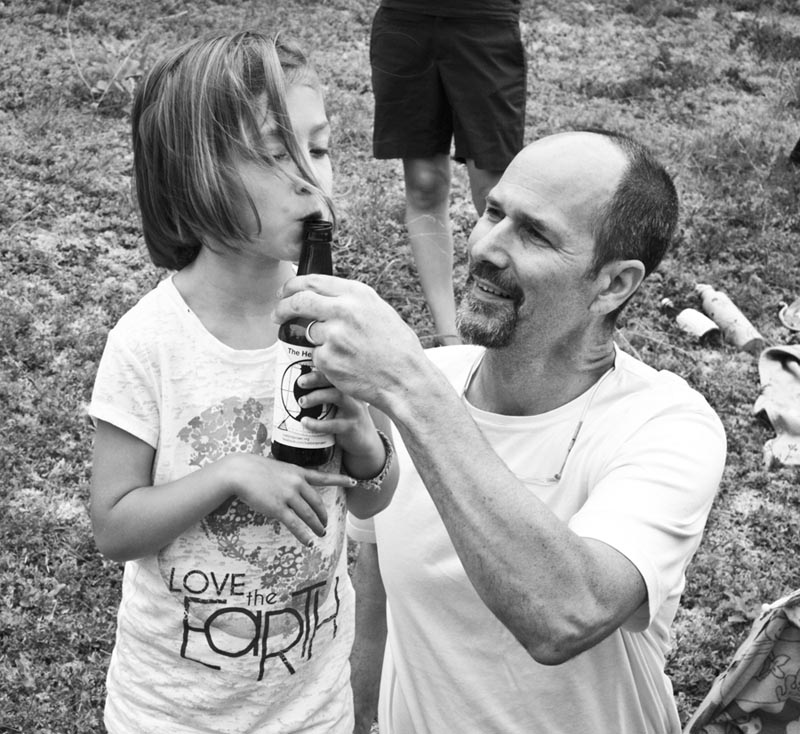How do you get kids to care about a bird that no longer flies to the treetops, nor whistles to greet the day? Appeal to their senses and their incomparable imaginative faculties, says Todd McGrain, artist, arts educator and activist.
Mr. McGrain did just that last week, during his visit to Sense of Wonder Creations summer camp, when he asked children to touch a reproduction heath hen, listen to its call and imagine what it must have looked like.

It’s the 22nd summer of Sense of Wonder Creations, a camp founded by Pam Benjamin and dedicated to teaching an appreciation of diversity, a sense of respect for the environment, and a willingness to serve others through art. The camp has a tradition of inviting experts to visit the camp. Last week’s session had the theme Wilderness Awareness, Endangered and Extinct Animals and Wild Edibles, and featured the people behind the Lost Bird Project, a film featuring Todd McGrain, who sculpts extinct birds.
Mr. McGrain visited the camp and accompanied the campers to the site of his heath hen sculpture at the Manuel F. Correllus State forest. The state forest, which occupies the greater part of the center of the Island, was created for the express purpose of protecting the last colony of heath hens, which lived on the edge of James Green’s farm. “It’s something to be proud of here on Martha’s Vineyard,” Mr. McGrain told the children.
Mr. Green, a farmer, was charged with the birds’ protection. But in 1930, a fire wiped out the last of the remaining birds. The last bird, named Ben or Booming Ben, was commemorated in a musical production performed at the Oak Bluffs school called Booming Ben, The Last Heath Hen, 10 years ago. On Thursday, children from Sense of Wonder Creations sang songs from the musical, and discussed its significance. “It was wonderful to spend four hours with heath hen in the forest,” Mrs. Benjamin said. “I thought that was a beautiful immersion.” Ben was last seen at the site in March of 1932.
Mr. McGrain asked the children to conjure an image of the bird, so that they could soon see, hear and feel him before them. Zach Utz, a rising third grader, was playing close attention. “It has feathers going down its back and it has two sacs that are red when they blow up,” Zach said. “It coos like this,” he said, pausing to blow over the top of his bottle.
The children were taught how to reproduce the heath hen call by blowing over a small bottle. He demonstrated using a small San Pellegrino bottle, the exact size and dimension it takes to play the exact pitch of the heath hen’s boom. Children blew over standard 12-ounce bottles, adding water to perfect the pitch. They cooed together, transporting listeners one hundred years back, when the birds greeted the day and serenaded the sunset on this very patch of land.
The children soon discovered that the sculpture was smooth to touch and just the right size for children ages seven to 12 to climb on. They took turns hoisting themselves up over the tail and mounting the bird. They sang out, “I’m king of the birds!” and “This is a pretty good throne!”
Young children often fail to grasp the meaning of extinction, Mr. McGrain said, but their imaginative capacities help perpetuate the bird’s memory. “They learn to marvel the bird like they would at a tyrannosaurus Rex or a Dodo bird.The task is to imagine a creature we will never see, and in that kind of knowing, we are more likely to protect the remaining species.”
Zach was fascinated. “It’s interesting that it was only on the Island, and that they’re extinct,” he said. Zach said this was his first introduction to the issue of endangered species. “Maybe that’s what we learn in third grade,” he suggested.
Mr. McGrain got his inspiration from a book called Hope is a Thing with Feathers, authored by Christopher Cokinos, which chronicles the extinction process of several North American birds. “With those names [of extinct birds] in my head, the sculptures [I was already making] started to become memorials.” All five sculptures are placed at the precise location where those birds were last seen.
The Lost Bird Project, was screened last week in Vineyard Haven. It follows Mr. McGrain as he searches for the locations where the five birds were last seen in the wild and negotiates for permission to install the large bronze sculptures there. Traveling all the way from the tropical swamps of Florida to the rocky coasts of Newfoundland, he scouts locations, talks to park rangers, and speaks at town meetings to garner support for his project.
Massachusetts officials posed the greatest challenge, though Islanders warmed up to the idea right away. “It took a bit of convincing for the state forest to accept the relevance of the memorial at that site,” Mr. McGrain said. A preview of the film was greeted with a standing ovation at the Martha’s Vineyard Film Festival this past March. “The primary hope is that the animals that are driven to extinction are not forgotten,” Mr. McGrain said. “There’s a callousness to forgetting that makes it easier to accept further extinction.”








Comments
Comment policy »